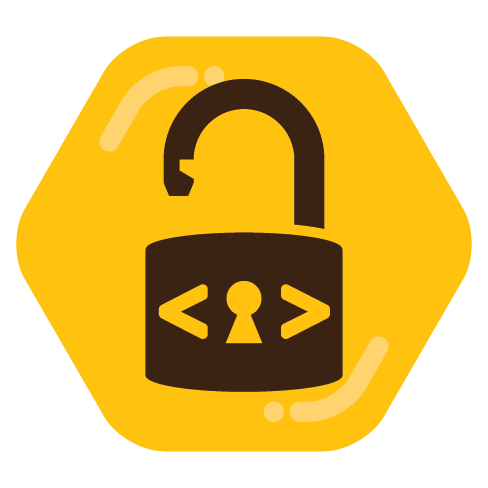

“the job market is so fucked up so but I’ve done a lot of open source work, here’s my Github”
Glorified network janitor. Perpetual blueteam botherer. Friendly neighborhood cyberman. Constantly regressing toward the mean. Slowly regarding silent things.


“the job market is so fucked up so but I’ve done a lot of open source work, here’s my Github”


The obvious recommendation is Gentoo stage1 tarball running in Windows Linux Subsystem.
(on a serious note: whatever you’re running on your daily driver)


Been using Nebula for a while now. Going to miss some YouTube creators, but I’ll expect to get over it.


The rubber keyboard was pretty weird first, felt a lot like cheap pocket calculator, but once you got used to the BASIC shortcuts, you could program like a champ on it.


The Swedish Social Democratic party (supposedly staunchly left wing) are the ones behind Chat Control 2.0. So just voting for left is not a guarantee we actually get sane MPs in the parliament.


What else am I missing?
Large scale manufacturers pre-installing Linux? Readily available multi-language support for home users? Coherent UI regardless of computer and distro underneath. Billions on lobbying money spent on politicians for favorable policy crafting? Billions spent on marketing campaigns to actually sell the idea to the masses who simply don’t care any of your points (or any technical reasons, privacy or anything else that might be top of mind of the current Linux userbase).
I’d say Linux has a good chance of capturing 5-6% of the market in the coming years if lucky (I believe we’re somewhere around 4% at the moment), unless one of the big tech monopolies decides to start throwing money into it (Like Google did with Android)


The only AI function I could see myself using is one that would summarize 15 minute youtube videos into coherent readable text in blog format. That would be nice. Especially when they’re posted like this, just links without much context.
I thought it was funny as well. Sometimes FOSS communities are so very uptight, we should relax a bit.
Yeah, well just go ahead and see if it works for you now. I doubt much has changed, but some bits are probably more polished these days.
Most distros support some kind of LiveCD, so you can try it out without having to reinstall your machine, it’s painless and quick to evaluate before you take the plunge.
zenbook duo pro
A quick search reveals this. Might be helpful. https://davejansen.com/asus-zenbook-duo-and-fedora-linux/


I guess it’s time to update uBlock Origin lists.


I mean… why would people downvote you for that?
I have a todo.txt which I update. If I need to “be mobile” I just stuff some notes into Signal note to myself.
During meetings, I still take notes with paper and pen, because that’s much faster than digital notes.


Ente Photos - Google Photos replacement with encryption and privacy
Ente Auth - Good multiplatform authenticator.
^^ These are paid for service (you get both with same sub), but extremely good.
AntennaPod - Podcatcher
K-9 email
Someone being enraged about snap on behalf of Windows users was certainly a take I didn’t know I needed.


I’ve configured Firefox on their Linux laptop not to keep any cookies after the browser is closed. I know this isn’t a Linux/Firefox issue
It’s you issue.
Block third-party cookies, but allow cookies from the site itself. I’m not sure why you’d filter those out in the first place?


Teaching kids good, healthy anticapitalist values is important. It’s also good to teach them some basic computing and privacy skills, because they’re not going to get that anywhere else. They’re going to be under lot of social peer pressure to have the latest phones and being connected on social media, consuming information from algorithms.They need to understand how to minimize the harm from Meta and the big tech.
Same applies to the copyright industry and their practices (along with corps who are heavily anti-repair like Apple) - they need to understand the exploitation model of capitalism and lobbying - from there, let them make their own choices.


A symlink is a file that contains a shortcut (text string that is automatically interpreted and followed by the operating system) reference to another file or directory in the system. It’s more or less like Windows shortcut.
If a symlink is deleted, its target remains unaffected. If the target is deleted, symlink still continues to point to non-existing file/directory. Symlinks can point to files or directories regardless of volume/partition (hardlinks can’t).
Different programs treat symlinks differently. Majority of software just treats them transparently and acts like they’re operating on a “real” file or directory. Sometimes this has unexpected results when they try to determine what the previous or current directory is.
There’s also software that needs to be “symlink aware” (like shells) and identify and manipulate them directly.
You can upload a symlink to Dropbox/Gdrive etc and it’ll appear as a normal file (probably just very small filesize), but it loses the ability to act like a shortcut, this is sometimes annoying if you use a cloud service for backups as it can create filename conflicts and you need to make sure it’s preserved as “symlink” when restored. Most backup software is “symlink aware”.
Yeah, I can get that. The xv situation probably wasn’t the best of examples though?
I’m not sure why you think I didn’t? Sorry if it was unclear.
From the blog:
This incident has really made me wonder if running the unstable branch is a great idea or not.
My comment:
Bottom line, don’t run bleeding edge distros in prod.
Hope this clarified my opinion! Have a good day!
TLDR in text please. Not going to spend 16 minutes watching that.